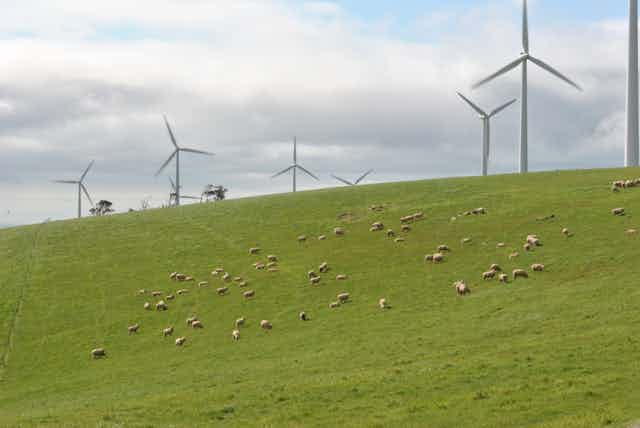While Australia’s energy market operator continues its investigation into South Australia’s recent state-wide blackout, there are important questions being asked.
For instance, was extreme weather the only cause? Has South Australia replaced fossil fuels with renewables too quickly?
And is the Australia’s Renewable Energy Target (RET) too ambitious all together?
It is impossible to find answers without understanding how the energy market works, and how replacing one source of energy with another actually happens.
How does the market work?
Most Australians (barring the Northern Territory and Western Australia) get their electricity through the National Electricity Market.
Suppose all the energy users, at a particular day and time, switch on lights, computers, industrial machinery, washing machines, vacuum cleaners, traffic control equipment and more. Added together, they determine how much energy is needed or demanded at that very point in time.
On the other side of the poles and wires, different independent electricity generators – thermal, hydro, wind, solar – are offering energy to the market, each at a price enabling them to recover costs and make a reasonable profit. This is called bidding.
Contemporary electronic technology allows for the wholesale market to take electricity and bids every five minutes, and allocate amounts accepted from the successful bidders. And who are those successful bidders?
All current bids are ranked by unit price. Allocation starts from the lowest-price bidder, then the second lowest one, and continues on until the current demand is met. The last accepted bidder’s price becomes the spot market price, and allows other successful bidders to make more or less profit.
How do renewables affect the market?
The main incentive policy for wind farms in Australia is the Renewable Energy Target (RET), which legislates that 33 gigawatt hours of electricity must come from renewable sources by 2020. As part of the RET, large-scale renewable energy generators (solar and wind farms) receive credits (certificates) for electricity they generate, which are then purchased by retailers to meet the target.
This market is separate to the National Electricity Market (NEM) and acts as a second income source for renewable energy generators.
With this in mind, we have modelled what happens when wind energy is phased into the market based on five minute electricity market data for several years.
The running (marginal) cost of wind generators is zero (because wind is free), unlike traditional thermal technology (which has to pay for coal and gas). Subsequently, wind generators recover their fixed costs and obtain profit in the difference between marginal cost and market price based on “more expensive” bids.
In the long run, wind generation decreases the market price through the bidding process. So with an increase in the energy volume generated by wind, the traditional sources are pushed out from the market. The chart below illustrates this process for South Australia.

Because their fixed costs can be recovered through the RET, wind generators can bid at near zero prices and completely eliminate traditional competitors. Therefore, wind generation can only naturally exist in the market if there are other, more expensive forms of generation to set the price. Otherwise wind farms could not recover their costs without the RET.
This means that there is an optimal proportion of wind energy in the market, where more expensive thermal generators set the market price.
If there is an optimum amount of wind energy in the market, this has important consequences for the RET. The target artificially increases the proportion of wind energy that can be sustained in the grid. While this may be the goal of the RET, without the incentive, wind capacity would eventually fall back to the market optimum.
In practice, this would occur as wind farms reach their natural life of about 20 years and aren’t replaced. So the RET won’t maintain or increase wind energy in the market in the long term, unless the incentives continue indefinitely.
The current RET is legislated to 2030, with a target set for 2020. To encourage wind energy in the long term, it would be required, then, to support the RET by an ongoing financial inducement without a closing date.
Without any financial inducement, wind farm developers would not increase capacity beyond the optimal point, and some thermal generation will continue to exist. Thermal generation can be completely excluded only if all the fixed costs of wind energy can be recovered through the RET. This is impractical and beyond the intentions of the policy.
So as it stands, our modelling suggests the RET is not a good way to increase the amount of wind generation in the electricity network. However our conclusions are different for other renewable energy sources such as hydro, which also have near zero marginal costs but have much longer lifetimes.
Therefore, where and if possible, we need to use a mix of technology, rather than overemphasising wind generation technology.
This article was co-authored by Henry McMillan, masters candidate at Monash University focusing on regulatory and energy economics.

